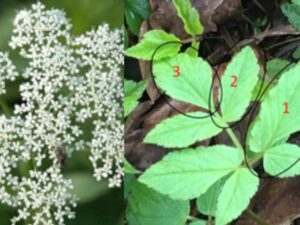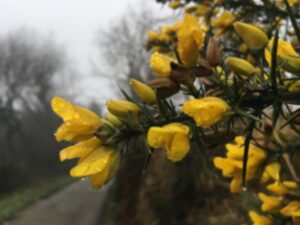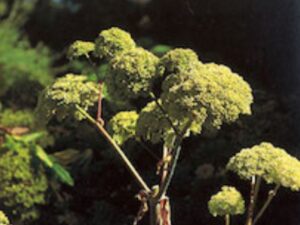Willow – Salix spp.
This is one of our beautiful true native trees, indigenous both to Britain and to Central and Southern Europe. It is in this month that the bark can be collected from the young branches, which are now in active growth. I don’t usually bore you with the rather dry chemistry of herbal compounds, but I am going to risk it and make an exception here as it is a truly interesting process.
It is widely known that aspirin is derived from the willow tree – and that aspirin has a tendency to irritate the stomach wall and cause bleeding, so much so that this can sometimes lead to anaemia. Willow, on the other hand, has the pain-relieving effect without the irritation to the stomach lining. The reason behind this is that the salicin found in willow passes through the stomach safely and then is metabolised by the digestive system into salicylic acid, which is the active pain-relieving compound. Aspirin, however, contains salicylic acid from the start, which is taken into the stomach directly and causes irritation. To me, this is a great example of how plant medicine works in a more natural, gentle way with the human body.
As well as pain relief, willow is used both to bring down fevers and more generally as an anti-inflammatory herb. It is widely used in modern herbal medicine for rheumatism, gout, fevers, aches and pains of all kinds, colds and flu. It has other uses besides the medical now, and has done throughout history. In the present day it is used for basket-making, in the manufacture of Dutch clogs, cricket bats and whistles for children; a more fashionable use for it today is to weave the cut or live branches into beautiful sculptures, fences, seats and huts. In the past, it was used as a substitute for palms and was used in churches on Palm Sunday; ironically, it was also used as an ingredient in high-grade gunpowder.
In folklore, the willow was a traditional emblem of grief, and a symbol of the weeping willow could be found marked on grave stones. Throughout the British Isles in history and in the present day, it has been used as a symbol of forsaken love. A young man or woman whose sweetheart married another would wear a willow garland around their head as a symbol of a broken heart. This tradition is still upheld in some Welsh villages, where the rejected lover would wear a willow hat. On a more positive note, it is considered very good luck to receive a gift of a willow from a friend on May Day morning.
This tree has been woven into our culture for millennia, a useful and beautiful plant. Next time you find yourself sheltering under its cool shade on a hot summer’s day, remember how far we have come together and whisper a sweet thanks into its slender branches.
Jayne
And finally
Here is another beautiful poem from my good friend Nadia Kingsley:
A whisper to the Willow
Grant me my wish –
to reach for my beliefs, then take me through the wicket door
to bend the words that will express.
Grant me my wish –
to taste my own dreamings, your wand a withy for my head;
then after, may I learn from this.
Grant me my wish –
that I too grow fast and, if we’re cut by manmade tools,
to know that death will be a start.
From you, I sense:
be pliable in a wind,
hold burdens with ease, as if in a basket.
Your skin heals mine.
Bring my fever down. I stand beneath.
Listen to my secrets.




